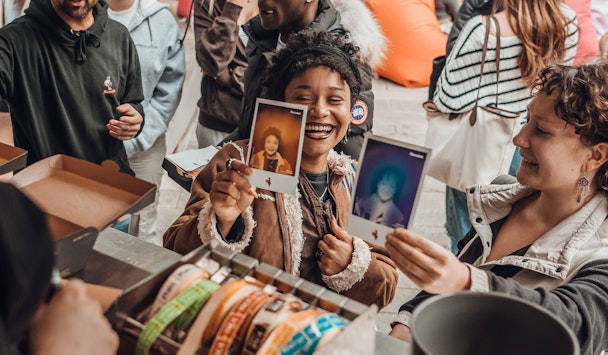How loyalty programs are changing the gen Z consumer journey
David Burgman of student marketing agency Raptor looks at how students’ lives are changing – and how loyalty programs are keeping up.

How are student-focused loyalty programs evolving? / Credit: Nando's
When I was a student, things were simple: go to the local discount supermarket – perhaps, here in the UK, a Netto (who remembers Netto?) – and buy own-brand baked beans for 7p. Yes, 7p. Off-brand soda Roller Cola was 10p. Students were smelly and penniless: not quite the bullseye target consumer for the biggest consumer brands, but we got by.
Fast forward 20 years, and things are rather different. Amid a turbulent economic climate, it’s impossible to get on the property ladder with 5%+ mortgage rates, pensions are delayed, and crazy energy prices have squeezed disposable income.
But students have become a safe bet for gaining customers for life. It’s an audience that regenerates yearly, receiving free money (or ‘student loans’) three times a year while they start their journey as independent consumers with a license to form their own habits, departed from the family nest with decision-making (good or bad) in their own hands.
In the UK, students account for 53% of the gen Z (18-24) audience, representing the next generation in spending power. History shows that this youngest generation is most responsible for new trends.
But the audience (and its habits) has changed. Life was simpler 20 years ago: no social media, online shopping just on its way, and the revolution of clicks-and-bricks retailing in its infancy. The food options were limited, with Domino’s matrix of deals the height of sophistication.
So what’s changed – in the audience and the landscape?
Savvy students
Today’s students are savvy with their cash, and persuading them to part with it is difficult. But once you’ve got them, they’ll be loyal.
As tech natives, they have access to abundant information, making them much less susceptible to brands – particularly those they feel are inauthentic. Meanwhile, influencers who promote multiple brands at once are getting canceled at a rate of knots, and brands that try to jump onto trends without any prior reference are being swept aside. Just look at Bud Light’s fall from grace.
The audience wants to align with brands that align with their values, from sustainability to diversity. Brands need to authentically resonate with the audience to drive consideration.
Gen Z buys into brands that make them feel a sense of belonging with shared values. Community is essential: being part of a group of like-minded individuals who can share experiences.
Meanwhile, students (and the wider gen Z audience) expect greater value than the average consumer. They see themselves as worse off, and expect brands to make a difference for them.
So how have brands invested in this new generation of consumers and successfully convinced them to purchase? Here’s the formula: savvy + authentic + community + values + value = loyalty.
The new loyalty program
25 years ago, I was 16 years old. My friends and I would walk to McDonald’s, show our student identity cards, and receive the free cheeseburger for students purchasing Big Mac meals. This was an under-the-table offer, not promoted in any restaurants or in communications; a word-of-mouth value exchange that made McDonald’s (in)famous among us students. It was my first experience of an audience receiving a discount for being an audience.
Only a few months ago, this age-old offer was discontinued, to some devastation on social media.
Today, the McDonald’s loyalty and rewards game, alongside other youth brands, is on a different level. It’s a Walkman-to-iPod degree of evolution.
What has driven this innovation? Not just audiences’ expectations and demands, but the advancements and availability of technology to activate, deliver and manage such programs: mobile-first digital experiences; apps; mobile pay providers; QR codes to validate rewards; verification technology; combined national programs with local deals; and consistent communication of new deals, discounts, offers and experiences.
In short, the user interface (UI) and user experience (UX) are slick, considered, dynamic and engaging. This is the base level of what the audience expects. The proposition and product are great, the marketing and promotion are spot-on, and the offer is fresh and exciting. Surely that’s enough? It was, until we raised the bar a little bit higher.
Magic through experiences
Here’s the secret sauce on how brands should take programs to the next level and become legends among audiences. The consumer journey needs a sprinkle of magic, in the form of experiences.
For students and gen Z, this could be through influencer meet-and-greets, or experiential activations, or exclusive tickets to events, or competitions. And it can be enhanced with two-way communication via WhatsApp, exclusive hype merchandise, digital gamification, and augmented reality.
Having the right people promote the program hits different. Having a hero influencer as the face of the program and an army of ambassadors to back up the narrative will guarantee consistency in messaging in between bursts of activity.
The time is now to execute these plans as we rocket toward September and the new academic year.
Content by The Drum Network member:

Raptor Marketing
We are Raptor, the student marketing agency.
We’re a team of young, hungry student marketing specialists who help build lasting connections between students,...

